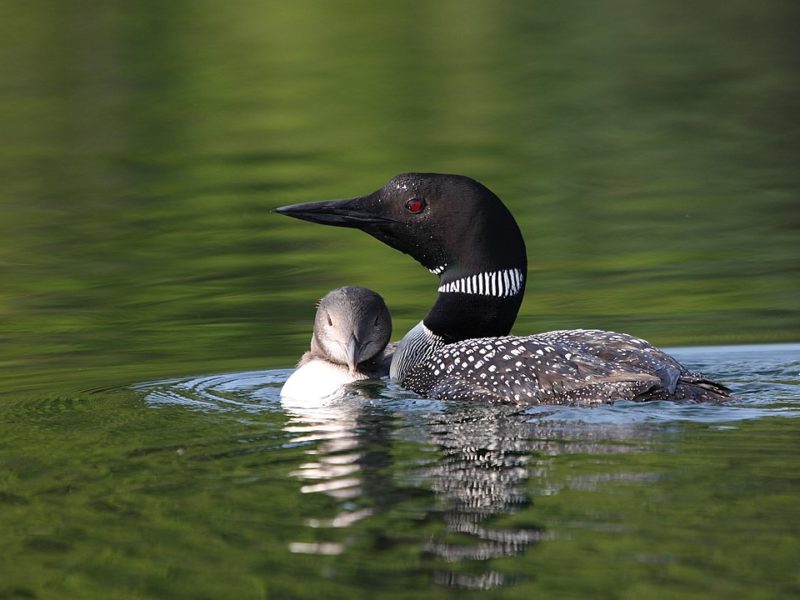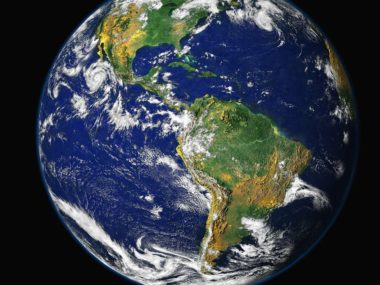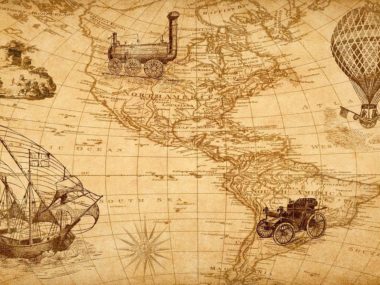By Christian Ryan, Abigail L., and Peter B.
The Origins conference is an annual gathering of scientists and theologians from the Creation Biology Society, the Creation Geology Society, and the Creation Theology Society. They come together to present their latest research. This year, the conference was held at Patrick Henry College. It took place from July 24-27 (lectures were given from July 25 to July 26). For those unable to attend, several of us here at the New Creation blog have prepared a short summary of each talk given at the conference.
Day 1
Are DNA Sequences Useful for Baraminology?
Research by J.D. Blaschke
Jeremy Blaschke opened the conference with a presentation on how molecular data (like DNA sequences) can be utilized for baraminology studies. Baraminologists often advocate using a holistic range of data, encompassing multiple types of evidence that a particular species belongs to one created kind or another. However, for the past few decades, molecular data has been absent from most baraminology.
Blaschke’s study seeks to remedy this deficiency by applying his new rhetoric to a test case: molecular baraminology. Can molecular baraminology distinguish two already-established created kinds, the dog kind (Canidae) and the bear kind (Ursidae)? As expected, his analysis produced two statistically significant clusters corresponding to each created kind! This study confirmed previous studies done using other standard criteria. The addition of genetic evidence to the baraminology toolkit has the potential to open new avenues in creation biology research.
As a preliminary exercise, Blaschke also applied molecular baraminology to humans and other primates. He wanted to see if this method could distinguish them. Amazingly, the analysis revealed three distinct groups: 1) humans, 2) chimps and gorillas, and 3) orangutans.
New Baraminological Analysis of “Basal” Pterosaurs Confirms Multiple Holobaramins
Research by M.A. McLain
Matt McLain’s first lecture was a presentation of the results from a new baraminology study on pterosaurs, flying reptiles. This study was a follow-up to his work presented last year, which was frustratingly inconclusive in identifying created kinds of pterosaurs. The study presented this year applied baraminological methodology to a new dataset that focused primarily on Triassic and Jurassic pterosaurs.
McLain was able to tentatively identify multiple created kinds of pterosaurs, including anurognathids, wukonopterids, and rhamphorynchids. More research is needed on pterosaur baraminology. Nevertheless, these results were a vast improvement over the ones presented last year.
During the Q&A segment, the order in which pterosaurs appear in the fossil record came under discussion. McLain pointed out that Triassic pterosaurs belong to different created kinds than other pterosaurs. Likewise, Jurassic pterosaurs belong to different created kinds than Cretaceous pterosaurs. This may have some interesting implications for the pre-Flood world ecology of pterosaurs.
The Ankylosauria: A Bottom-Heavy Holobaramin?
Research by N.A. Doran and M.A. McLain
Matt McLain stood in as presenter for a lecture that the lead author of this study, Neal Doran, originally intended to present. This study looked at Ankylosauria, the so-called armored dinosaurs. Put simply, this group contains two main types: ankylosaurids (those with tail clubs) and nodosaurs (those without tail clubs). This study confirmed earlier research that suggested Ankylosauria to represent a single created kind. This would suggest that the defensive tail club of ankylosaurids developed sometime after Creation Week.
McLain reported this to be the first identified “bottom-heavy” created kind. This means that in the fossil record of Ankylosauria, species of nodosaurs (which appear first) tend to be very different from each other when they first appear in the fossil record, but the differences between ankylosaurid species (which appear later) are much less.
From a Flood perspective, this series suggests the various Ankylosauria species lived in different ecological communities that were adjacent to each other in the pre-Flood world. Nodosaurs, which were buried first, appear to have been more diverse. Ankylosaurids, on the other hand, were mostly buried later, were less diverse, and more specialized. Interestingly, this “bottom-heavy” trend is common in the fossil record, so it might have some interesting implications for creationist paleontologists.
Clarifying the Ornithopoda: Partition Around Medoids (PAM) and Disparity
Research by N.A. Doran and M.A. McLain
Matt McLain presented a second study headed up by Neal Doran, this time on a group of dinosaurs called ornithopods. This group of dinosaurs includes not only the famous “duck-billed” hadrosaurs, but also the iguanodonts and the little hypsilophodonts. As with the previously-mentioned study, this one attempted to identify created kinds within this group and determine what relevance their order in the fossil record had for our understanding of pre-Flood ecological communities.
Results suggest that there are between three and eight created kinds of ornithopods. As with the previous study, more work is needed before more conclusive results can be drawn. Nevertheless, what is known shows that ornithopods are another “bottom-heavy” group of dinosaurs. Iguanodonts (which appear first in the fossil record) are more diverse and generalized, and hadrosaurs (which appear higher in the fossil record) are less diverse and more specialized. Patterns within the ornithopod fossil record may provide helpful insights in interpreting larger-scale relationships between ecological settings.
A Baraminological Analysis of the Loons (Gaviiformes: Gaviidae) Reveals Their Holobaraminic Status
Research by M. C. Matthews, A. Ramerth, M. Guillory, and T.R. Brophy
Tim Brophy and some of his students provided us with research on loons (Gaviidae) a group of waterfowl. There are four or five living species of loons (depending on who you ask!) making up one genus, Gavia, and several extinct species, such as those belonging to the genus Colymboides. Most evolutionary biologists consider loons to be close relatives of penguins, petrels, albatrosses and shearwaters.
Based on their appearance and behavior alone, previous creationist research on loons has suggested that these birds are a created kind unto themselves and do not share common ancestry with other birds. To test this hypothesis, Brophy and his students ran statistical baraminology analyses of their morphology and compared them to other birds. They also compared their vocalizations and consulted the literature to see which species of loons have interbred, which would confirm that they belong to the same created kind.
Brophy and his students discovered that all living loon species likely form a single created kind and do not share common ancestry with penguins or other birds. There was, however, some question as to whether Colymboides belong to this created kind. Some results indicated it might, but others suggested that they belong to their own created kind. They concluded that the ambiguity may be due to the fact that Colymboides is poorly known from the fossil record. As such, they look forward to continuing their research on the baraminology of loons in the future.
New Baraminological Methods Confirm Monobaraminic Status of the Horses (Perissodactyla: Equidae) and Preliminary Analyses of New Datasets Suggest the Possibility of Discontinuity between Horses and Various Outgroup Taxa
Research by J.R. Gregory, K. Ray, M.-E. Tallman, L. Ragan, and T.R. Brophy
Tim Brophy was joined by another student for another baraminology presentation, this time on the horse family (Equidae). Even though only one genus, Equus, exists today, there are 35 or so known from the fossil record. The consensus among old-earth paleontologists is that horses share a common ancestor with other hoofed mammals, specifically tapirs and rhinos.
The horse family was one of the earliest animal groups analyzed using statistical baraminology. While those initial studies concluded that all horses likely belong to the same created kind, no studies have consistently established that they are not related to other hoofed mammals. Statistical baraminology methods have been greatly improved in the years since those early studies were done, however, so Brophy and his team decided it was time to get back on the horse (pun intended).
Overall, results from the current study confirmed those from earlier studies that showed all horses belong to a single created kind. Most excitingly, preliminary results were done and found evidence that horses were for the most part sufficiently different from other hoofed mammals to belong to their own created kind unto themselves. Additional research will be done to see if these results hold up in future analyses. Brophy and his students believe that the horse created kind represents a burst of rapid diversification after the global Flood.
Fountains, Windows and Flood Models
Research by K. Wise
Kurt Wise’s lecture was a follow-up to last year’s review of historical views on the “fountains” and “windows” described in the Flood narrative. He presented a series of views including canopy models, comet models, volcanic models, subcrustal water models, the immediate inundation claim, the hydroplate theory model, and catastrophic plate tectonics. He analyzed each claim against two data sets: Scriptural data and physical world data. In light of this analysis, he concluded that most of these models are probably wrong. Catastrophic plate tectonics, on the other hand, seems to fit the best when tested against both data sets, though it is still in need of modification.
Genre and Geology: Meaning and Mechanism in Genesis 7:11b—Part II: Syntactic Structure and Morphological Sequence
Research by S. Boyd and D. Smith
Steve Boyd and Doug Smith presented part two of a lecture that they presented last year regarding the literary structure of Genesis 7:10–12. In this year’s lecture, they analyzed Genesis 7:11b, which reads, “…all the fountains of the great deep were broken up, and the windows of heaven were opened.” Their goal was to determine if this passage is prose or poetry. Genesis 7:11a and 7:12 are clearly prose. Boyd and Smith concluded that Genesis 7:11b is poetry, and that the two lines represent parallelism. This may allow for a less literal interpretation of these lines than if they were prose.
The Fountains of the Great Deep and the Windows of the Heavens in the Genesis Flood Narrative: Chronology
Research by W. Barrick
William Barrick presented an exegetical study on the chronology of the Flood. His goal was to provide geologists and geophysicists with data for their studies. He suggests that Genesis 8:1 does not reflect a point of time during the Flood. Rather, it is a summary of the situation during the Flood. He also addressed the question of whether the “fountains” and “windows” stopped flooding the earth on Day 40 or Day 150 of the flood. His conclusion is that they stopped at Day 150.
Interdisciplinary Session Panel Discussion
W. Barrick, S. Boyd, D. Smith, K. Wise, and J. Whitmore
The first day of the Origins Conference ended with an interdisciplinary panel discussion moderated by Jeremy Lyon. Discussion was held between Bible scholars William Barrick, Steve Boyd, and Doug Smith, and geologists Kurt Wise and John Whitmore. This was the follow-up to the previous year’s discussion panel looking at the “fountains” and “windows” as recorded in the Flood narrative. A great deal of discussion focused on the implications of the tentatively poetic rather than “literal” nature of Genesis 7:11b.
Kurt Wise was concerned as to whether we could deduce anything about the nature of the “fountains” or “windows” from this passage if it was poetic, as this would derail what he suggested in his lecture earlier that day. Steve Boyd and William Barrick, however, pointed out that just because the passage may be poetic does not mean that “anything goes.” For example, the passage still clearly speaks of a water source from below, disavowing the idea some creationists have proposed that the “fountains” were lava spewing up from volcanoes; likewise, the water source from above was not ice or comets raining down upon the earth, which are other ideas some creationists have proposed.
The advantage, Boyd pointed out, is that if Genesis 7:11b is poetic rather than prose (as he believes to be the case), it provides more latitude regarding its interpretation. This would, for example, still allow the “fountains” and “windows” to be consistent with the catastrophic plate tectonics model.
Day 2
God’s Direct Creation Mode in Scripture: Is it Effected in One Step, Discontinuous Sequence, and/or Continuous Sequence?
Research by J. Lyon
Jeremy Lyon presented a study on the mode of creation. His goal was to determine what the Bible says about God’s creative process. Did God create using a single step, a discontinuous sequence, or a continuous sequence? Lyon examined the initial creation event as well as later examples of supernatural events recorded in Scripture, including the budding of Aaron’s rod (Numbers 17:8), the enlivening of the dry bones (Ezekiel 37:1-14), and the creation of Jonah’s shade plant (Jonah 4:6-8). He concluded that Scripture neither requires nor precludes the possibility that these events resulted from any of the processes mentioned above, nor does it require that God used any known modern process. He also concluded that God did not use an accelerated modern process.
Strengthening Creationism, Weakening Naturalism: Creation Biology and Hume’s Essay “Of Miracles”
Research by T. Varallo
Creationists face the challenge of affirming prior supernatural acts with the limitation of only being able to study currently operating natural processes. In this presentation, Thomas Varallo proposed that researchers can overcome this challenge by fulfilling philosopher David Hume’s essay, “Of Miracles.” Hume defined a miracle as a violation of natural law; since natural law is all we observe in the present, and there are never a sufficient number of qualified witnesses, it would not be rational to believe miracles occur.
However, Varrallo points out that low probability arguments are the kryptonite for Hume’s essay. As an example, he provided the formation of the hemoglobin molecule. The chances of hemoglobin developing by natural processes and random chance are incredibly small, so based on Hume’s logic, its existence is a violation of the law of mathematical probability. Therefore, Varallo argues, the existence of hemoglobin is a miracle, even according to Hume’s criteria. A supernatural origin for that miracle is an excellent explanation.
Can We Reconstruct the Ancestral Form of Humanity?
Research by P. Brummel and T. C. Wood
Peter’s presentation focused on reconstructing the anatomy of early humans. He pointed out that Noah and his family were the sole survivors of the Flood, making them the common ancestral population from which all post-Flood humans originated. The human fossil record shows that humans diversified quickly after the Flood, yielding a variety of distinct people groups, many of which are now extinct.
Our own species (Homo sapiens) does not go as far back into the fossil record as some of the other human forms like Homo erectus. Given this diversity, it is not legitimate to simply assume that Noah and his family would have looked exactly like modern people. In his presentation, Peter described three different methods used in the study to try to explore possible characteristics of an “average” human form. African Homo erectus ended up being closest to the average human form.
When they created a phylogeny, or branching tree, a taxon called Homo floresiensis appeared as the most divergent taxon. They also looked at particular anatomical characters of the various human forms. It was noted that to have the fewest independent origins of certain characters, a non-Homo sapiens form would be required as the ancestral state. Overall, this study cautions against the assumption that Homo sapiens is the ancestral form of the human kind, given that it is not close to the “average form” seen in the fossil record, and has features which would seem to indicate it is derived rather than ancestral.
Neanderthals Are Post-Flood
Research by T. C. Wood
Dr. Todd Wood’s research focused on addressing the possibility that the Flood buried Neanderthals. His work focused specifically on cave sites, because they have a necessary sequence of deposition. First, the rock in which the cave will be carved must form, then water or acid can erode away the rock, forming a cavern. Finally, sediment and organisms can accumulate within the cave. If we could find Neanderthal remains within a cave cut in pre-Flood rock, then it raises the possibility that the Neanderthal was buried in the cave before or during the Flood.
He formed a list of 104 sites attributed to Neanderthals, most of which were caves containing bodily remains. The majority of these caves were carved into Mesozoic rock layers, which formed during the Flood. Given that these rock layers deposited late in the Flood, it seems that they would not have eroded till after the Flood, and thus the remains within would also have deposited after the Flood. None of the Neanderthal cave sites which Dr. Wood found in his research were carved into Precambrian rock (pre-Flood deposits), implying that none of these Neanderthals were buried during the Flood.
Research by J. Francis
Joe Francis’ presentation provided a creationist perspective on human viruses. Many viruses and other microorganisms live in our bodies. Fortunately most of these microorganisms are benign or beneficial. These viruses can promote human health by several possible mechanisms, including prevention of infection. Since the human body quickly eliminates most animal viruses, and they posses no known beneficial activities, Francis hypothesizes that most infection-causing viruses in humans have passed to us from animals. Testing of this hypothesis consisted of surveying the literature concerning 27 families of human-infecting viruses.
It turned out that many do not cause illnesses to their typical animal hosts. There is strong evidence that at least four animal virus species persist during the lifetime of humans: herpes, Hepatitis B, JC (John Cunningham), and Torque teno. Interestingly, JC virus and Torque teno virus appear in people groups across the world, and cause little to no illness in a high percentage of the human population. And while it sometimes appears in a variety of mammals, humans are the primary source for JC virus. Francis hypothesizes that JC and Torque teno viruses may play a similar role and that humans are the primary host of these viruses.
Examining Between-Clade Incongruence within Vespoidea Using Cytochrome Oxidase I
Research by S. Wheeler and J.D. Blaschke
In this presentation, Sean Wheeler talked about his research which took the baraminology toolkit from Jeremy Blaschke’s talk on the previous day, applying it to wasps. This study was important because few baraminological studies have focused on insects. Based on the cognitum baramin concept developed by Kurt Wise, Wheeler and his co-author, Jeremy Blaschke, hypothesized that wasps do not belong to a single created kind. Rather, wasps (Vespoidea) are a much more inclusive group containing multiple created kinds. More specifically, based on several aspects of their behavior and morphology, Wheeler and Blaschke suggested that the cricket assassin wasps belong to their own created kind.
A Correlation Study Between Phylogeny and Stratigraphy for Disparid and Diplobathrid Crinoids
Research by B.O. Hendrich, T.C. Wood, P.A. Garner, N.A. Doran, J.L. Summerville, and K. McGuire
Todd Wood stood in for a talk that Dr. Neal Doran originally intended to present. He reported on their team’s research that aimed to determine how well the fossil record matched up with evolutionary trees of descent. This was in response to the common claim that the fossil record matches evolutionary theory. To test this claim, Dr. Wood’s team first looked at a group of extinct animals called crinoids (or “sea lilies”). This analysis found only modest agreement between the fossil record of crinoids and the order they should appear in with accordance to evolution. This is only the first of many studies like this in the works.
Biostratigraphy and the Post-Flood Boundary Question
Research by M. Ross and C. Arment
Marcus Ross and Chad Arment gave the summary of this presentation. It provided an update on recent work attempting to solve Flood/post-Flood boundary debate. Their main tool in their arsenal was the fossil record. Some young-earth creationists think that the Flood formed the entire fossil record beneath sedimentary deposits associated with the post-Flood Ice Age. Ross and Arment argue that this is problematic. The Flood destroyed the world as it existed at that time and wiped out all but two of every kind of air-breathing, land creature (with the exception of seven or fourteen of each kind of clean animal).
Placing the Flood/post-Flood boundary just beneath Ice Age deposits means that the fossil records of many Ice Age varieties of air-breathing, land animal kinds descend much further down, completely uninterrupted by the Flood. Worse still, the fossils of many of these lineages appear exclusively in a single place on the planet. This would mean that many animal groups were transported and buried in a certain place during the Flood, and then after the Flood, members of those same created kinds migrated from the Ark only to where their pre-Flood ancestors were buried.
For example, fossil kangaroos and modern kangaroos appear only in Australia. Likewise, fossil pronghorns only show up in North America, where modern pronghorn thrive today. Ross and Arment argue that the best place to put the Flood/post-Flood boundary is much lower in the geologic record. They think it roughly coincides with the Cretaceous-Paleogene boundary.
Does Hopi Lake Hold Water?
Research by S.A. Austin, E.W. Holroyd III, T.F. Folks, and N. Loper
Steve Austin’s presentation was an update on the fieldwork he and his team have accomplished on Bidahochi Basin in northeastern Arizona, located just east of Grand Canyon. He argues that Bidahochi Basin once contained the waters of a huge lake, Hopi Lake. He think that it emptied catastrophically, carving out the Grand Canyon in the process.
A number of old-earth geologists and fellow young-earth creationists alike have been skeptical of this hypothesis. This has led Austin and his team to continue their research in this area. For this reason, Austin jokingly calls Hopi Lake “the lake that don’t get no respect”! This presentation focused on their identification of linear, contour-following landforms called strandlines, which form along the edges of lakes. Steve Austin used the presence of strandlines in Bidahochi Basin to document its filling with water. As more and more water filled in the basin, the shoreline moved higher and higher, forming strandlines as it went. This serves as strong, additional evidence for the existence of Hopi Lake.
Geomagnetic Radiation Shielding and Higher Air Pressure: An Environmental/DNA Damage Hypothesis of Biological Longevity
Research by D.W. Seely
In this talk, Denver Seely attempted to explain the long lifespans of pre-Flood patriarchs. According to his modeling, the pre-Flood world experienced a higher magnetic field strength and atmospheric pressure. If true, then this would act to reduce radiation damage to our DNA, enabling us to live much longer. Seely proposes that his model can simulate a multistage lifecycle model for an organism’s somatic tissue. This includes the following stages: incubation (from conception to birth), childhood (rapid growth), adolescence (rapid growth), young adult (structural maturation), mid-life (sustained maintenance-damage accumulation, and old age (damage accumulation passes threshold). Another interesting feature of his model is that it would suggest a lower elevation water cycle in the pre-Flood earth, which would preclude the appearance of rainbows.
Geosynchronous Moon Disruption—Comparing Static Tide Loss with Ocean Flow Patterns During Collisionless Planetesimal Encounters
Research by D.W. Seely
Denver Seely also gave the final lecture. He proposed collisionless encounters between the Earth-Moon system and large planetary bodies during the Flood. Seely pointed out that there is strong evidence that the Moon’s path around Earth has changed over time. Therefore, we should consider what the Moon’s orbit may have been like before the global Flood. His simulations suggest that a collisionless encounter with another planetary body may have physically disrupted the Moon’s orbit. As a result, this would transfer the Moon to its modern orbit. This motion has the potential to raise sea level. It could also help explain the transport of thick packages of marine sediment onto the continents.












lots of great discussions and disagreements. Yes the flood line is the k-t line.
Its interesting they say there are bird kinds like loons. not sure of how many kinds of birds on the ark or whether just one with seven types. I deny there are dinosaurs but agrree the dna is not a trail. No reason not to see dna as so complex as to spring forth more bodyplan diversity as needed wiith sudden radical dna change.